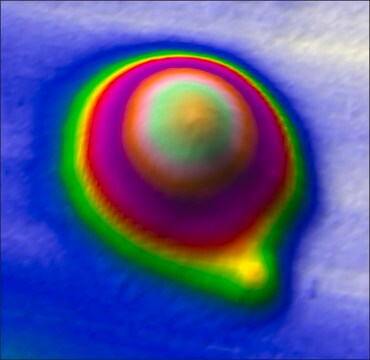B8395
Anti-Bovine IgG (whole molecule) antibody produced in rabbit
whole antiserum
Iniciar sesiónpara Ver la Fijación de precios por contrato y de la organización
About This Item
Productos recomendados
biological source
rabbit
Quality Level
conjugate
unconjugated
antibody form
whole antiserum
antibody product type
secondary antibodies
clone
polyclonal
contains
15 mM sodium azide
technique(s)
indirect ELISA: 1:150,000
quantitative precipitin assay: 4.0 mg/mL
shipped in
dry ice
storage temp.
−20°C
target post-translational modification
unmodified
¿Está buscando productos similares? Visita Guía de comparación de productos
Specificity
The antiserum is determined to be immunospecific for bovine IgG.
Application
Anti-Bovine IgG (whole molecule) antibody produced in rabbit has been used as a standard to determine protein content by Bradford method using Bio-Rad protein assay dye reagent. It has also been used in several assays to develop a particle concentration fluorescence immunoassay for the quantitative determination of IgG in bovine milk.
Anti-Bovine IgG (whole molecule) antibody produced in rabbit has been used for detecting IgG antibodies in multichannel monolithic quartz crystal microbalance (MQCM).
Biochem/physiol Actions
IgG antibody subtype is the most abundant of serum immunoglobulins of the immune system. It is secreted by B cells and is found in blood and extracellular fluids and provides protection from infections caused by bacteria, fungi and viruses. Maternal IgG is transferred to fetus through the placenta that is vital for immune defense of the neonate against infections.
Immunoglobulins G (IgGi, IgGa) of bovine milk is capable of protecting the gut mucosa against microorganisms.
Physical form
Rabbit Anti-Bovine IgG is supplied as a liquid containing 0.1% sodium azide (see MSDS) as a preservative
Preparation Note
treated to remove lipoproteins
Storage and Stability
For continuous use, store at 2-8 °C for up to one month. For extended storage, the solution may be frozen in working aliquots. Repeated freezing and thawing is not recommended. Storage in "frost-free" freezers is not recommended. If slight turbidity occurs upon prolonged storage, clarify the solution by centrifugation before use.
Disclaimer
Unless otherwise stated in our catalog or other company documentation accompanying the product(s), our products are intended for research use only and are not to be used for any other purpose, which includes but is not limited to, unauthorized commercial uses, in vitro diagnostic uses, ex vivo or in vivo therapeutic uses or any type of consumption or application to humans or animals.
¿No encuentra el producto adecuado?
Pruebe nuestro Herramienta de selección de productos.
Storage Class
10 - Combustible liquids
wgk_germany
nwg
Elija entre una de las versiones más recientes:
¿Ya tiene este producto?
Encuentre la documentación para los productos que ha comprado recientemente en la Biblioteca de documentos.
Development of a particle concentration fluorescence immunoassay for the quantitative determination of IgG in bovine milk
Jack NL, et al.
Journal of Agricultural and Food Chemistry, 41(4), 682-686 (1993)
Real-time multianalyte biosensors based on interference-free multichannel monolithic quartz crystal microbalance
Jaruwongrungsee K, et al.
Biosensors And Bioelectronics, 67, 576-581 (2015)
G C Duff et al.
Journal of animal science, 78(2), 267-274 (2000-03-10)
Our objective was to determine the effects of preshipping (PRE) vs. arrival (ARR) medication with tilmicosin phosphate (MIC; Exp. 1 and 2) and feeding chlortetracycline (CTC; 22 mg/kg of BW from d 5 to 9; Exp. 2) on health and
S Hashira et al.
Pediatrics international : official journal of the Japan Pediatric Society, 42(4), 337-342 (2000-09-15)
Maternal immunoglobulin G (IgG), transferred across the placenta to the fetus during intrauterine life, is an important component of the neonatal immunological defence mechanisms against infection. There is controversy with respect to differences in placental transfer of the different IgG
Nuestro equipo de científicos tiene experiencia en todas las áreas de investigación: Ciencias de la vida, Ciencia de los materiales, Síntesis química, Cromatografía, Analítica y muchas otras.
Póngase en contacto con el Servicio técnico




